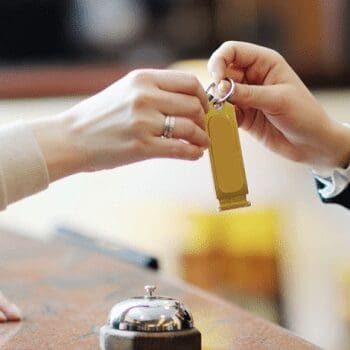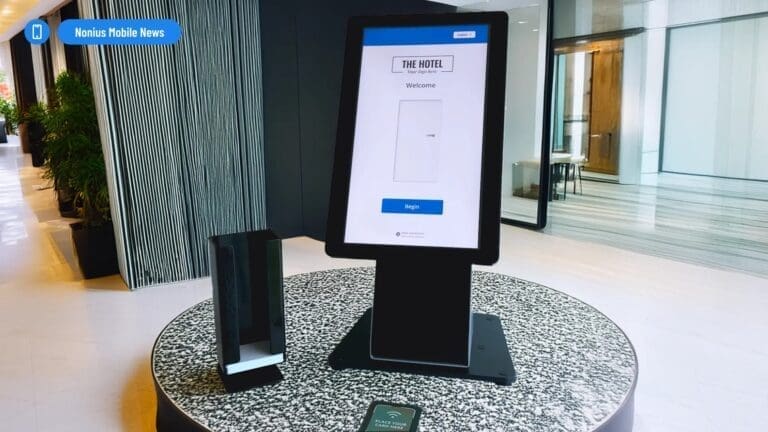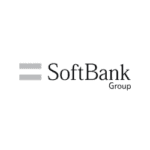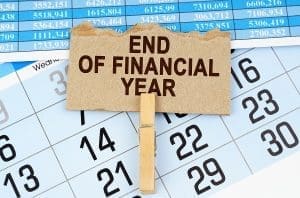 The hotel check-in process is practically the same as it was a hundred years ago. Hotels require guests to register, which involves the guest providing or confirming personal information, including contact information and a signature. The process is so old, so no one knows why the same process is still there. Most likely, the method originated because of legal reasons. Kings and rulers wanted to keep track of where people traveled. Most countries still require hotel guests to provide information.
The hotel check-in process is practically the same as it was a hundred years ago. Hotels require guests to register, which involves the guest providing or confirming personal information, including contact information and a signature. The process is so old, so no one knows why the same process is still there. Most likely, the method originated because of legal reasons. Kings and rulers wanted to keep track of where people traveled. Most countries still require hotel guests to provide information.The check-in process has not evolved much during the past 100 years and has become an institutional process to get into a hotel. As a result, guests better behave and follow the process because there is no way a guest will win any argument with the front desk employee or the front desk manager. Here are the most common steps in the current process and how they emotionally affect the guest.
Nervous first impression
The guest arrives, walks to the front desk, greets the front desk employee, and asks to be checked in. The employee welcomes the guest, asks for the name, and starts to search for the reservation in the PMS. Most people have more complex names than Smith, so it isn’t easy to find the right reservation on the first attempt. The employee cannot find the reservation and repeatedly asks for the name and spelling. Now the guest gets a little bit worried that the reservation is not there and that there might be a problem. That negative feeling goes away as soon as the employee finds the reservation.
Fill out the information, again
Most of the time, the employee prints the registration card without the information the guest filled out when he made the reservation. Hoteliers do not get all the information if guests make reservations through an OTA or another third-party channel. Guests do not know and are therefore frustrated about having to fill out the information again. Then sign and initial that you will pay for smoking in the room and sometimes for other problems the guest might cause. Oh, I almost forgot, the employee must see your ID to verify that it is you.
Can you pay for your stay?
The employee is about to make the key, but before handing it over, the guest needs to present a credit card. Unfortunately, the hotel has no trust whatsoever in the guest, so the process involves securing an amount well above the room rate to cover extra spending.
Mandatory information
The procedure is almost over, but before you can leave the front desk, the employee must give you all the information about the hotel. Then, finally, the key is in the guest’s hand, and the guest heads toward the hotel room. The process can take anywhere from a few minutes to half an hour and even longer if the guest has to wait in line.
Check-in is the worst part of the stay
All guests hate the check-in process. The hotel industry always talks about hospitality, but the check-in process is everything but hospitality. Hotels originally designed the check-in procedure from an internal perspective and not with the guest in mind. Over time, the manual check-in process has evolved into a bureaucratic monster and is up for a total re-design using modern technology.
Innovators automate the check-in
Few hotels have automated the check-in process and pushed the work to the guest’s smartphone. These hotels can focus on hospitality instead of making the guest nervous, not trusting the guest, and leaving a mixed first impression of the hotel. These hotels also enjoy a much lower labor cost. In addition, new opportunities open up, such as upselling, room selection, and buying additional products and services. Furthermore, the hotel will improve the data quality since the guest will update the information in the app. A well-designed app will increase both total revenue and guest satisfaction.
Make procedures guest friendly
Most hotels say no to new technology because the hotel needs to see every guest checking into the hotel. Otherwise, someone might sneak in the should not be allowed to stay in the hotel. How can I show my passport at the automatic gates and get into a country without meeting someone? How can I select my seat on a plane but not my room in a hotel? Hotels have a lot to learn from processes in other industries or even governmental functions.
After over one hundred years with the same check-in process, it is time for hotels to rethink this and many other procedures where the hotel forces the guest through a painful, unnecessary process.



















